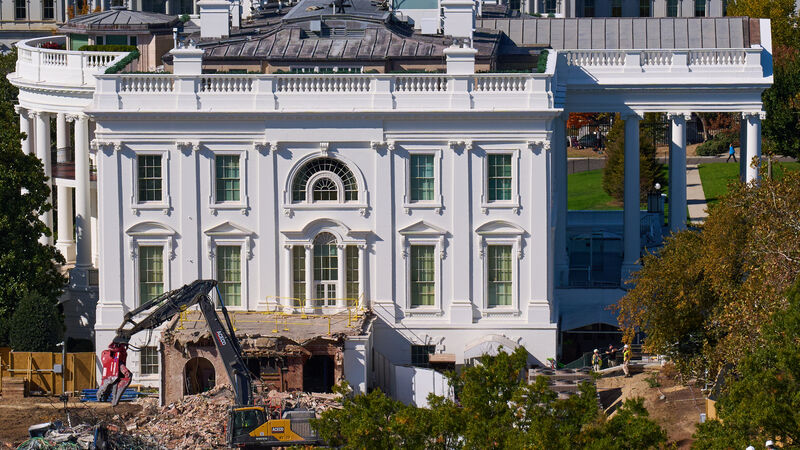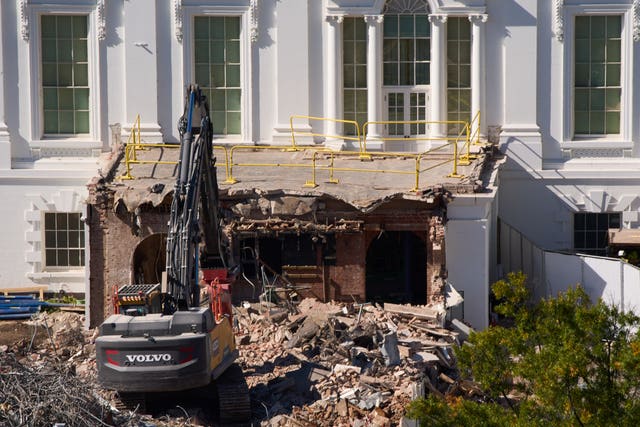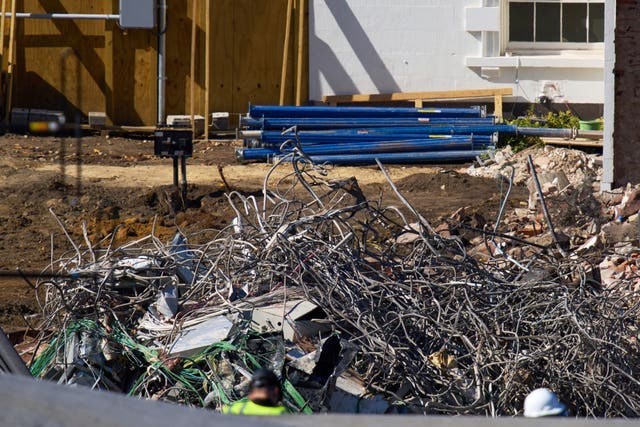White House East Wing demolished as Trump proceeds with ballroom construction

The East Wing of the White House has been demolished as Donald Trump moves forward with construction of a ballroom, photos showed.
The two-storey structure of drawing rooms and offices, including workspace for first ladies and their staff, has been turned into rubble as part of the Republican president’s plan to build what he said is now a 300 million dollar (£225 million) ballroom nearly twice the size of the White House.
He said on Wednesday that keeping the East Wing would have “hurt a very, very expensive, beautiful building” which he claimed presidents have wanted for years. He added that “me and some friends of mine” will pay for the ballroom at no cost to taxpayers.

The proposed ballroom was announced as a 200 million dollar (£150 million) project in July, a cost Mr Trump publicly updated to 250 million dollars (£187 million) last week. On Thursday, he put the price tag “in the neighbourhood” of 300 million dollars.
White House press secretary Karoline Leavitt attributed the demolition and higher building cost to changes that happen with any construction.
“The plans changed when the president heard counsel from the architects and the construction companies who said that in order for this East Wing to be modern and beautiful for many, many years to come, for it to be a truly strong and stable structure, this phase one that we’re now in was necessary and the president wants to do right by the People’s House,” she said at a press briefing.
Mr Trump said later that 350 million dollars had been raised for the project, but remained vague about his personal contribution.
“I won’t be able to tell you until I finish,” he told reporters, “but I’ll donate whatever is needed.”
Mr Trump allowed the demolition to begin this week despite not having approval from the government agencies with jurisdiction over construction on federal property.
Preservationists had urged the Trump administration to halt the demolition until plans for the 90,000-square-foot ballroom could go through the public review process.

The National Trust for Historic Preservation said the review process, including time for members of the public to comment on plans for the ballroom, would “provide a crucial opportunity for transparency and broad engagement — values that have guided preservation of the White House under every administration going back to the public competition in 1792 that produced the building’s original design”.
The trust also expressed concern to the National Capital Planning Commission, the National Park Service and the Commission of Fine Arts that the size of the proposed ballroom will overwhelm the Executive Mansion, which stands at 55,000 square feet, “and may permanently disrupt the carefully balanced classical design of the White House”.
Both commissions have jurisdiction over changes to the White House. The park service manages the White House grounds and has a role in the process as several trees on the South Lawn have been cut down as part of the construction.
Both agencies currently are closed because of the government shutdown. Mr Trump installed top aide Will Scharf as chairman of the planning commission.
The National Park Service said in August, after the White House announced the ballroom project, that it had provided historic preservation guidance and support as part of a broader consultation process. It said final decisions are made by the Executive Office of the President.











